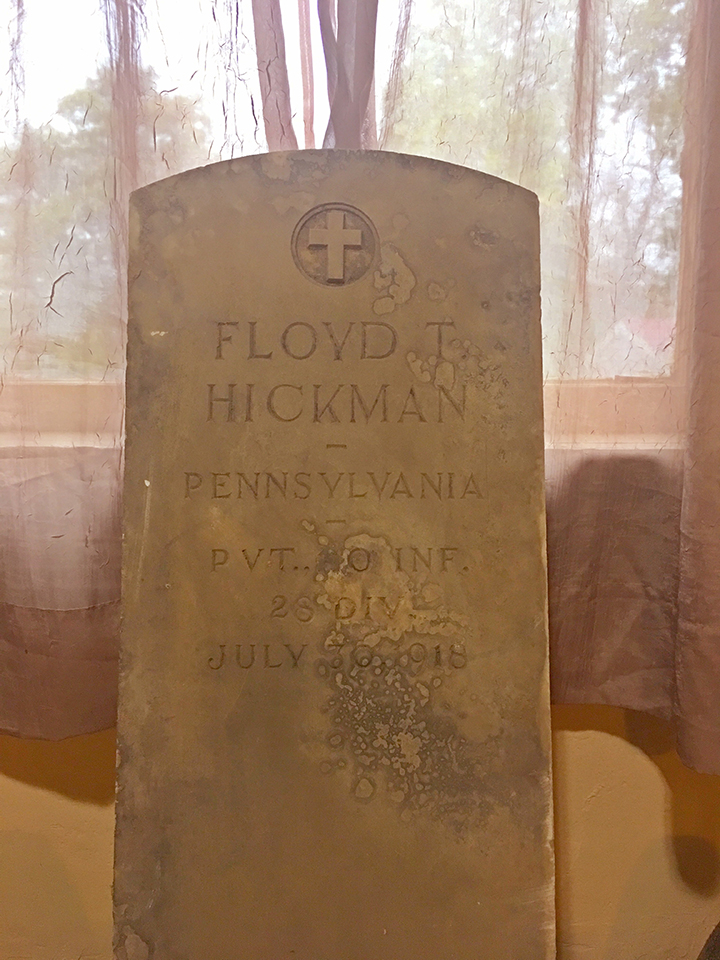By Matthew Cumberledge
Artifacts are about the stories they can tell and the preservation of history, from the greatest events to the smallest human stories.
Some artifacts can recall history to a larger extent than others. This artifact articulates the story of a whole generation and the war to end all wars, yet it is still a personal story and deeply emotional to those who once viewed it.
November 11th, 2018 marked the 100th anniversary of the end of the war to end all wars, World War I. In Greene County, that date also saw the dedication of a new monument, adjacent to the Greene County Historical Society Museum, which commemorates the fallen of Greene County in the Great War.
Floyd T. Hickman was one of those men commemorated by the new monument. In the military exhibit room of the Greene County Historical Museum there is a simple white marble marker that bears the names and dates of this soldier, who gave his last full measure of devotion on the battlefields of France on July 29th, 1918.
Floyd was one of a number of men who lost their lives on that terrible July 29th. These men, forever remembered as “The Rain Day Boys” were killed in action on the date of Waynesburg’s unique Rain Day celebration.
Floyd fell victim to an artillery shell that landed near him while in a wheat field near Grimpette woods.
He was initially buried in a rough, but lovingly created battlefield grave, and then later moved to the Aisne-Marne American Cemetery in Belleau, France. Floyd didn’t return home until 1923, when he was interred for the final time on November 3rd, 1923 in Green Mount Cemetery.
It is thought that the marker for Floyd T. Hickman held in the Greene County Historical Society Museum was perhaps a memorial marker placed in the family plot at Green Mount Cemetery by Floyd’s grieving family before he returned home for burial. It took some time to locate Floyd’s battlefield grave, and his family carried the burden of grieving for a lost son with no gravesite, memorial or location where they could express their grief and pay tribute to their heroic son.
Perhaps it was this that led to the inscription on this marker bearing the incorrect death date of July 30th, 1918 in lieu of July 29th. It’s possible that his family may not have known all of the details at that time.
When Floyd was finally laid to rest in Green Mount Cemetery, a new marker was provided that would provide the pattern for other markers in the family plot.
The men of Greene County who lost their lives on that fateful date of July 29th belong to one of the saddest chapters in our history, yet for as long as we willing to remember them, they will live through us forever.
